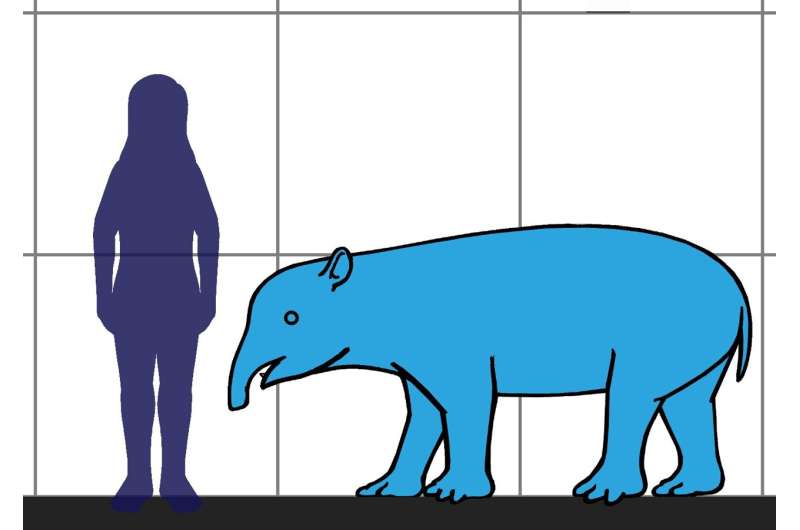Credit: Conty, CC BY-SA 4.0
A researcher at Case Western Reserve University has found that the extinct Josephoartigasia, believed to be the largest rodent to ever live, and other ancient rodents in South America were smaller than has been thought. In his paper published in the journal Royal Society Open Science, Russell Engelman describes his study of the joint at the back of the ancient creature's skull (the occipital condyle) to estimate the size of the creatures and what he learned by doing so.
Prior research has shown that South America was home to a large variety of very large rodents millions of years ago. Some researchers have suggested they ranged in size from 600 to 900 kg, the largest the size of a modern bison. But there has been much debate about the size of the creatures due to the lack of physical evidence.
In this new effort, Engelman has taken a different approach, using the joint at the back of the skull that has been found to be an accurate size measurement technique in modern rodents. The occipital condyle is a joint that connects the skull to the spine. Prior research has shown that its size does not vary much across a species, so it has come to be seen as a standard for comparison purposes.
In his work, Engelman compared the size of the occipital condyle of over 400 species of modern mammals, including elephants. In so doing, he found that the joint could be used to determine the size of the animal it came from. He then applied the same type of analysis to the ancient rodents and in so doing found them to be much smaller than has been thought. The largest, he found, was no bigger than a pony.
He suggests his findings also indicate the brains of the ancient creatures were likely bigger than has been assumed. He concludes by suggesting that despite the reduction in size estimates, the ancient rodents were still awfully big. He imagines a 450 kg rat would still look pretty big and would likely be a scary creature indeed, considering prior research has suggested it would have had a bite three times as powerful as a modern tiger.
More information: Russell K. Engelman, Resizing the largest known extinct rodents (Caviomorpha: Dinomyidae, Neoepiblemidae) using occipital condyle width, Royal Society Open Science (2022). DOI: 10.1098/rsos.220370
Journal information: Royal Society Open Science
© 2022 Science X Network
























